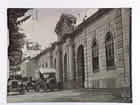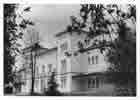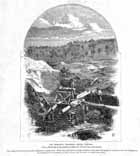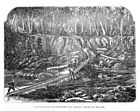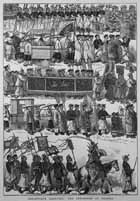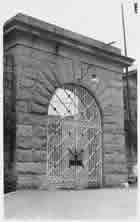- Alternative Names
- Ovens Goldfield
- Reid’s Creek
Gold was first discovered at Reid’s Creek, the present site of Beechworth, in February 1852 by a shepherd named Howell and his two companions. They did not claim the reward offered by the government, instead they tried to hide their discovery. When the find eventually became public knowledge, thousands of diggers arrived and Beechworth was transformed from a solitary bark hut to a thriving centre. In the first four months of 1853 the gold escort took 123,000 ounces out of Beechworth. By 1857, Beechworth’s population had increased to almost 20,000 and numerous churches, banks, stores and hotels, as well as a hospital had become established.
The initial discovery at Reids Creek was followed by finds at Woolshed, Stanley, Myrtleford, Eldorado and Wooragee. The area, named after the river on which it was sited, was known as the Ovens Goldfield. Chinese miners were predominant on the goldfield during the 1860s and continued to form a large part of the population until the gold ran out around the turn of the century.
The Ovens Goldfield was principally an alluvial goldfield. At first, hydraulic sluicing was the main mining method, requiring large quantities of water and correspondingly impressive engineering feats. Later, this method was replaced by dredging, which was pioneered at Woolshed Creek in the early 1890s. In the following 60 years, sand and gravel pumps and bucket dredges worked extensively in the Beechworth area.
Duncan Cameron, a digger who worked the riverbed at Woolshed, became the first Member of Parliament for Beechworth. After his election in 1856, he made headlines by driving into Beechworth in a carriage drawn by a horse with golden horseshoes.
Today, Beechworth is a popular tourist destination. It is considered to be one of Victoria’s best-preserved gold mining towns, with 32 of its buildings listed by the National Trust.


